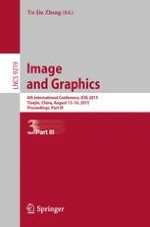2015 | Buch | 1. Auflage
Image and Graphics
8th International Conference, ICIG 2015, Tianjin, China, August 13–16, 2015, Proceedings, Part III
herausgegeben von: Yu-Jin Zhang
Verlag: Springer International Publishing
Buchreihe : Lecture Notes in Computer Science
